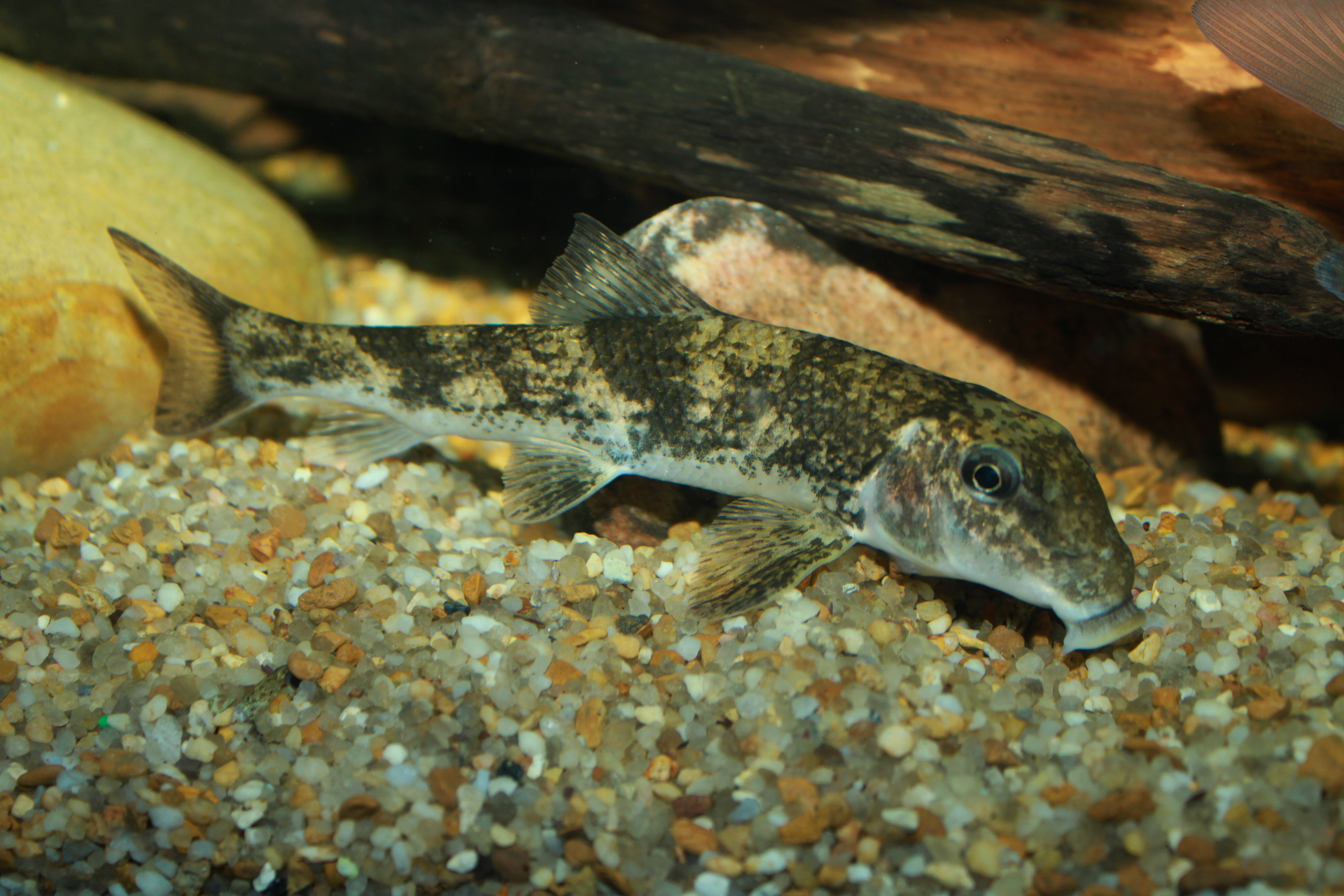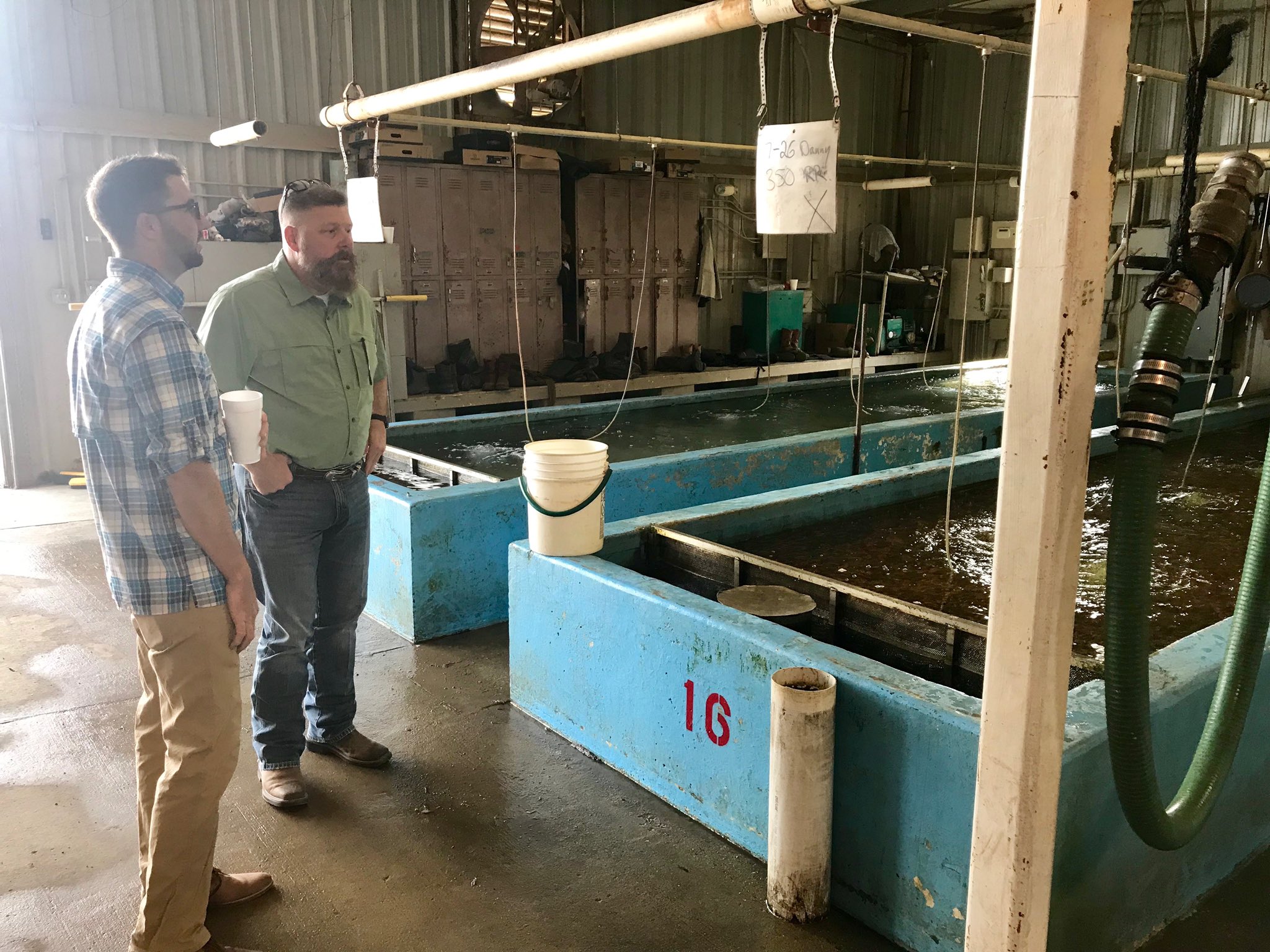|
Caryophyllidea
The Caryophyllideans are a group of tapeworms that infect fish and annelids (segmented worms) with a simple scolex or "head." Worms in this order only have one proglottid, which is believed to be the primitive condition for tapeworms. They are generally less than 10 centimetres long. Caryophillideans represent a unique type of tapeworm, such that they possess a monzoic, unsegmented, body, with only a single set of reproductive organs. In the Caryophyllidean life cycle, adults live in fish, who pass the tapeworm eggs in their feces. Annelids eat the eggs, where they hatch into oncosphere larvae that move through intestinal wall and become procercoid larvae in the body cavity. When the annelid is eaten by a fish, the tapeworm matures. Catfish, suckers, and minnows are among the fishes that can serve as definitive hosts. The genus '' Archigetes'' Leuckart, 1878, a caryophyllidean, is unique among all tapeworms in that its species can mature in invertebrate hosts (Oligochaeta ... [...More Info...] [...Related Items...] OR: [Wikipedia] [Google] [Baidu] |
Archigetes (worm)
The genus Archigetes Leuckart, 1878 is unique among all tapeworms in that its species can mature in invertebrate hosts (Oligochaeta Oligochaeta () is a subclass of animals in the phylum Annelida, which is made up of many types of aquatic and terrestrial worms, including all of the various earthworms. Specifically, oligochaetes comprise the terrestrial megadrile earthworm ...), in contrast to all other cestodes which have a vertebrate host. All five species were described as plerocercoids in oligochaetes, but two of them were also described as adults in cypriniform fishes. Species According to WoRMS, there are five valid species: * ''Archigetes brachyurus'' Mrázek, 1908 * ''Archigetes cryptobothrius'' Wiśniewski, 1928 * ''Archigetes iowensis'' Calentine, 1962 * ''Archigetes limnodrili'' ( Yamaguti, 1934) Kennedy, 1965Kennedy CR. 1965. Taxonomic studies on ''Archigetes'' Leuckart, 1878 (Cestoda, Caryophyllidea). Parasitology, 55, 439–451. * ''Archigetes sieboldi'' Le ... [...More Info...] [...Related Items...] OR: [Wikipedia] [Google] [Baidu] |
Tapeworm
Eucestoda, commonly referred to as tapeworms, is the larger of the two subclasses of flatworms in the class Cestoda (the other subclass is Cestodaria). Larvae have six posterior hooks on the scolex (head), in contrast to the ten-hooked Cestodaria. All tapeworms are endoparasites of vertebrates, living in the digestive tract or related ducts. Examples are the pork tapeworm (''Taenia solium'') with a human definitive host, and pigs as the secondary host, and '' Moniezia expansa'', the definitive hosts of which are ruminants. Body structure Adult Eucestoda have a white-opaque dorso-ventrally flattened appearance, and are elongated, ranging in length from a few millimeters to 25 meters. Almost all members, except members of the orders Caryophyllidea and Spathebothriidea, are polyzoic with repeated sets of reproductive organs down the body length, and almost all members, except members of the order Dioecocestidae, are protandral hermaphrodites. Most except caryophyllideans c ... [...More Info...] [...Related Items...] OR: [Wikipedia] [Google] [Baidu] |
Cestoda
Cestoda is a class of parasitic worms in the flatworm phylum (Platyhelminthes). Most of the species—and the best-known—are those in the subclass Eucestoda; they are ribbon-like worms as adults, known as tapeworms. Their bodies consist of many similar units known as proglottids—essentially packages of eggs which are regularly shed into the environment to infect other organisms. Species of the other subclass, Cestodaria, are mainly fish infecting parasites. All cestodes are parasitic; many have complex life histories, including a stage in a definitive (main) host in which the adults grow and reproduce, often for years, and one or two intermediate stages in which the larvae develop in other hosts. Typically the adults live in the digestive tracts of vertebrates, while the larvae often live in the bodies of other animals, either vertebrates or invertebrates. For example, ''Diphyllobothrium'' has at least two intermediate hosts, a crustacean and then one or more freshwater ... [...More Info...] [...Related Items...] OR: [Wikipedia] [Google] [Baidu] |
Proglottid
Cestoda is a Class (biology), class of parasitic worms in the flatworm phylum (Platyhelminthes). Most of the species—and the best-known—are those in the subclass Eucestoda; they are ribbon-like worms as adults, known as tapeworms. Their bodies consist of many similar units known as proglottids—essentially packages of eggs which are regularly shed into the environment to infect other organisms. Species of the other subclass, Cestodaria, are mainly fish infecting parasites. All cestodes are parasitism, parasitic; many have complex Life history theory, life histories, including a stage in a Host (biology)#Definitive and secondary hosts, definitive (main) host in which the adults grow and reproduce, often for years, and one or two intermediate stages in which the larvae develop in other hosts. Typically the adults live in the digestive tracts of vertebrates, while the larvae often live in the bodies of other animals, either vertebrates or invertebrates. For example, ''Diphyllob ... [...More Info...] [...Related Items...] OR: [Wikipedia] [Google] [Baidu] |
Catostomidae
The Catostomidae are the suckers of the order Cypriniformes, with about 78 species in this family of freshwater fishes. The Catostomidae are almost exclusively native to North America. The only exceptions are '' Catostomus catostomus,'' found in both North America and Russia, and ''Myxocyprinus asiaticus'' found only in China. In the Ozarks they are a common food fish and a festival is held each year to celebrate them. '' Ictiobus cyprinellus'' can reach an age up to 112 years, making it the oldest known freshwater teleost. Description and biology The mouths of these fish are most commonly located on the underside of their head ( subterminal), with thick, fleshy lips. Most species are less than in length, but the largest species ('' Ictiobus'' and '' Myxocyprinus'') can surpass . They are distinguished from related fish by having a long pharyngeal bone in the throat, containing a single row of teeth. Catostomids are most often found in rivers, but can be found in any freshw ... [...More Info...] [...Related Items...] OR: [Wikipedia] [Google] [Baidu] |
Oligochaeta
Oligochaeta () is a subclass of animals in the phylum Annelida, which is made up of many types of aquatic and terrestrial worms, including all of the various earthworms. Specifically, oligochaetes comprise the terrestrial megadrile earthworms (some of which are semiaquatic or fully aquatic), and freshwater or semiterrestrial microdrile forms, including the tubificids, pot worms and ice worms ( Enchytraeidae), blackworms ( Lumbriculidae) and several interstitial marine worms. With around 10,000 known species, the Oligochaeta make up about half of the phylum Annelida. These worms usually have few setae (chaetae) or "bristles" on their outer body surfaces, and lack parapodia, unlike polychaeta. Diversity Oligochaetes are well-segmented worms and most have a spacious body cavity (coelom) used as a hydroskeleton. They range in length from less than up to in the 'giant' species such as the giant Gippsland earthworm (''Megascolides australis'') and the Mekong worm (''Am ... [...More Info...] [...Related Items...] OR: [Wikipedia] [Google] [Baidu] |
Definitive Host
In biology and medicine, a host is a larger organism that harbours a smaller organism; whether a parasitic, a mutualistic, or a commensalist ''guest'' (symbiont). The guest is typically provided with nourishment and shelter. Examples include animals playing host to parasitic worms (e.g. nematodes), cells harbouring pathogenic (disease-causing) viruses, a bean plant hosting mutualistic (helpful) nitrogen-fixing bacteria. More specifically in botany, a host plant supplies food resources to micropredators, which have an evolutionarily stable relationship with their hosts similar to ectoparasitism. The host range is the collection of hosts that an organism can use as a partner. Symbiosis Symbiosis spans a wide variety of possible relationships between organisms, differing in their permanence and their effects on the two parties. If one of the partners in an association is much larger than the other, it is generally known as the host. In parasitism, the parasite benefits ... [...More Info...] [...Related Items...] OR: [Wikipedia] [Google] [Baidu] |
Minnow
Minnow is the common name for a number of species of small freshwater fish, belonging to several genera of the families Cyprinidae and Leuciscidae. They are also known in Ireland as pinkeens. Smaller fish in the subfamily Leusciscidae are considered by anglers to be "true" minnows. Types of minnows Bluntnose minnow (''Pimephales notatus''): The bluntnose minnow is a primary bait fish for Northern America, and has a very high tolerance for variable water qualities, which helps its distribution throughout many regions. The snout of the bluntnose minnow overhangs the mouth, giving it the bluntnose. There is a dark lateral line which stretches from the opercle to the base of the tail, where a large black spot is located. The average size of the adult is approximately 5 cm (2 in). ' Pimephales'' Common shiner (''Notropis cornutus)'': These fish are one of the most common type of bait fish and are almost exclusively stream dwellers. The common shiner can be identif ... [...More Info...] [...Related Items...] OR: [Wikipedia] [Google] [Baidu] |
Procercoid
Procercoid is the first larval stage of some tapeworms, which usually develops inside the body cavity of copepods. Flatworm in this stage is not enclosed in a protective cyst, but is infectious. Procercoids resemble their adult forms in pathways of energy metabolism. They are basically anaerobic, lacking complete Krebs Cycle The citric acid cycle (CAC)—also known as the Krebs cycle or the TCA cycle (tricarboxylic acid cycle)—is a series of chemical reactions to release stored energy through the oxidation of acetyl-CoA derived from carbohydrates, fats, and protein ..., and rely on glycolysis. References {{reflist Larvae ... [...More Info...] [...Related Items...] OR: [Wikipedia] [Google] [Baidu] |
Catfish
Catfish (or catfishes; order Siluriformes or Nematognathi) are a diverse group of ray-finned fish. Named for their prominent barbels, which resemble a cat's whiskers, catfish range in size and behavior from the three largest species alive, the Mekong giant catfish from Southeast Asia, the wels catfish of Eurasia, and the piraíba of South America, to detritivores (species that eat dead material on the bottom), and even to a tiny parasitic species commonly called the candiru, ''Vandellia cirrhosa''. Neither the armour-plated types nor the naked types have scales. Despite their name, not all catfish have prominent barbels or "whiskers". Members of the Siluriformes order are defined by features of the skull and swimbladder. Catfish are of considerable commercial importance; many of the larger species are farmed or fished for food. Many of the smaller species, particularly the genus '' Corydoras'', are important in the aquarium hobby. Many catfish are nocturnal, [...More Info...] [...Related Items...] OR: [Wikipedia] [Google] [Baidu] |
Fish
Fish are aquatic, craniate, gill-bearing animals that lack limbs with digits. Included in this definition are the living hagfish, lampreys, and cartilaginous and bony fish as well as various extinct related groups. Approximately 95% of living fish species are ray-finned fish, belonging to the class Actinopterygii, with around 99% of those being teleosts. The earliest organisms that can be classified as fish were soft-bodied chordates that first appeared during the Cambrian period. Although they lacked a true spine, they possessed notochords which allowed them to be more agile than their invertebrate counterparts. Fish would continue to evolve through the Paleozoic era, diversifying into a wide variety of forms. Many fish of the Paleozoic developed external armor that protected them from predators. The first fish with jaws appeared in the Silurian period, after which many (such as sharks) became formidable marine predators rather than just the prey of arthrop ... [...More Info...] [...Related Items...] OR: [Wikipedia] [Google] [Baidu] |




.jpg)


